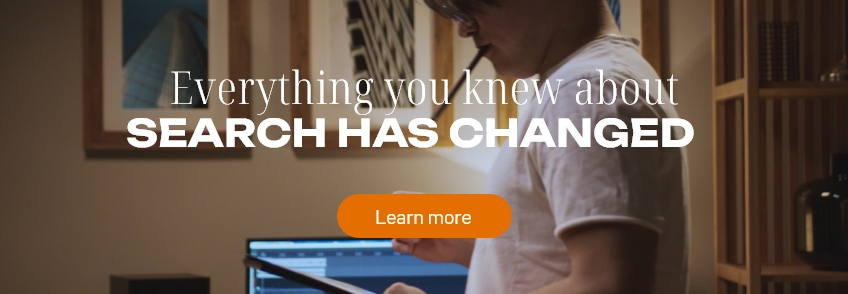Another year, another Google I/O. But this time, it’s different. Google I/O 2025 wasn’t just about shiny product updates or minor search tweaks. This event was about a shift; an unmistakable step into the future that is powered by artificial intelligence.
AI didn’t just feature at this year’s event, it dominated. From the way we search to the way we code, create, and consume content, Google laid out a vision of an AI-first ecosystem and it’s already rolling out. Whether you’re a brand, a marketer, or a developer, what Google unveiled will have implications far beyond your search bar.
In this article, we will unpack the key developments and explore what they mean in practical terms.

AI is reshaping search… again
Conversational search with AI mode
Say goodbye to single-line search queries. With AI Mode, Google introduces a more natural, fluid way to search powered by Gemini 2.5. Think of it as a personal search assistant that understands context across multiple interactions.
You can answer more complex questions such as “Compare these two laptops, filter by battery life, now show me user reviews from the last three months” and get contextual, curated responses, without all the tab-hopping!
AI Mode is currently only available to users in the U.S., with broader availability expected to follow.
AI overviews go global
Building on last year’s Search Generative Experience (SGE), AI Overviews are now launching globally. These summaries appear at the top of search results, condensing information from a number of sources into a more readable snapshot.
For SEO’s and brands, this means that featured snippets just got an upgrade and competition for visibility just got tougher. Context and authority is more important than ever.

Gemini 2.5 & Project Astra: The next wave of intelligence
Deep think: Gemini gets philosophical
With Gemini 2.5, Google has turned up the IQ dial. The new Deep Think mode enables more complex reasoning, logic chaining, and structured analysis.
Whether you’re troubleshooting code, writing strategy documents, or trying to automate workflows, Gemini 2.5 feels less like a chatbot and more like a colleague.
Project Astra: AI that sees, hears & knows
Google’s most futuristic demo came via Project Astra, a prototype multimodal assistant that processes voice, video, and environmental data in real time. Imagine pointing your phone at something like a circuit board asking, “What’s broken here?” and actually getting an answer!
Astra hints at an ambient AI future, where assistance isn’t just responsive, but proactive. It’s still in the early days, but the direction is clear: real-time, context-aware intelligence is the next big UX shift.
At launch, Astra is being tested in the U.S. only, with plans for wider release via Search Labs and Gemini later in the year.

Generative media: AI as a creative partner
Imagen 4: Visual fidelity unlocked
Imagen 4 brings unprecedented realism to AI-generated images, with subtle lighting, natural textures, and precise details. Artists and marketers now have more creative control than ever, without needing design degrees.
Veo 3 & flow: Video’s AI moment
Veo 3 ups the ante by generating high-quality video content, complete with native audio. Paired with Flow, an assistant that extends and edits footage autonomously, Google is aiming squarely at creators and filmmakers.
Expect these tools to play a central role in future advertising, branded content, and entertainment production workflows.
Currently, Veo 3 is available only in the U.S. through the AI Ultra subscription.
Developer tools: From prompt to product
Google’s 2025 vision for developers is unambiguous: strip away friction, accelerate workflows, and let AI handle more of the grind. Whether you’re spinning up a UI from scratch or wading through a wall of error messages, the instruction is simple, just prompt, and let the machine do the rest.
Stitch: Bridging design and code
Stitch is a designer’s dream (or a developer’s existential crisis). It takes sketches, screenshots, and text prompts, and turns them into production-ready UI code in seconds. It’s a genuine leap in the design-to-dev handoff; reducing lag, guesswork, and the dreaded spec doc.
Jules: The AI pair programmer
Jules is Google’s take on the AI coding assistant, currently in beta and aimed squarely at developers who want to work smarter, not harder. It provides intelligent code suggestions, context-aware debugging, and real-time support, acting more like a co-pilot with domain knowledge than a glorified autocomplete.
But it’s not just about speed, it’s about accessibility. These tools lower the barrier to entry for non-engineers, letting marketers, product teams, and designers get closer to the build. For developers, that means faster iteration, fewer bottlenecks, and more time for high-impact problem solving. When prototyping becomes instant, so does feedback and the cycle accelerates.

AI Ultra: Premium intelligence for the power user
Not everything is free… or cheap. Google introduced AI Ultra, a $250/month subscription aimed at power users and enterprises. It grants early access to bleeding-edge tools like Deep Think, Imagen 4, and Veo 3. For now, it’s only available in the US, but expect a wider rollout as demand grows.
It’s expensive but it’s also a glimpse into how Google plans to monetise premium AI capability: by offering an unfair advantage to those who can afford it.
Final thoughts: What it all means
Google I/O 2025 marked a clear pivot. AI is no longer a side feature, it is the product. Whether you’re navigating the evolving search landscape, creating content with generative tools, or developing next-gen digital experiences, staying ahead means understanding and adapting to this AI-first world.
This isn’t a “wait and see” moment. It’s already here.
At Found, we’re helping brands navigate exactly this kind of complexity. From AI-informed SEO strategies to content workflows that integrate tools like Gemini, Imagen, and Veo, we’re not just watching this shift, we’re building within it.
If your business is wondering what AI means for digital strategy, now’s the time to talk.



